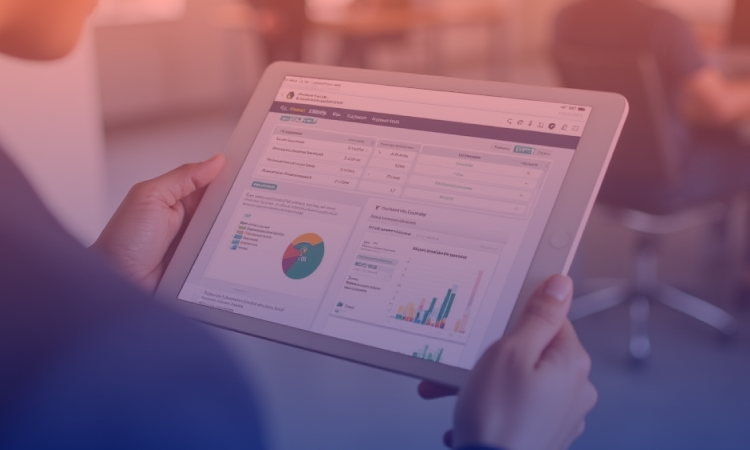Introduction
B2B companies face growing complexity in their sales processes as buyer journeys involve more stakeholders and extended decision cycles. These factors challenge traditional CRM systems and disconnected tools. Often, they lead to missed opportunities and inefficiencies. Revenue orchestration platforms (ROPs) have emerged to solve these challenges. They unify teams, data, and workflows to drive better revenue outcomes.
What Is a Revenue Orchestration Platform?
A revenue orchestration platform serves as the central hub for sales, marketing, and customer success. It connects and automates the entire revenue process.
According to Vaishnavi, Senior Analyst at QKS Group, “An ROP streamlines all the information sellers need to communicate effectively and delivers insights from those interactions, creating a continuous cycle that helps sellers advance deals through the pipeline.”
The primary purpose of an ROP is to:
- Centralize customer and prospect data across functions.
- Enable revenue teams (sales, marketing, success) to collaborate effectively.
- Automate and optimize workflows to reduce manual inefficiencies.
- Provide actionable insights using AI and predictive analytics.
Unlike traditional CRM systems, which primarily store records, ROPs focus on connecting people, processes, and systems to orchestrate the entire revenue lifecycle.
Why B2B Companies Are Turning to Orchestration
- Revenue enablement platforms help align teams. Companies are required to coordinate post-sales activities with sales efforts owing to a higher focus on retention and expansion.
- ROPs consolidate fragmented information from multiple tools into a single source of truth, which helps eliminate data silos.
- AI-driven insights also help improve forecasting, which provides more accurate and timely revenue predictions.
- ROPs help shift responsibility from isolated departments to a unified team approach. Furthermore, these platforms shorten the sales cycle and enhance revenue predictability.
Leading Vendors and Technologies
Several companies define today’s ROP market:
- Clari and Salesloft recently announced a merger in August 2025. These leaders combine Clari’s AI-driven forecasting and pipeline management with Salesloft’s expansive sales engagement and revenue process orchestration capabilities, offering a unified platform for revenue operations.
- Gong is known for its conversation intelligence platform that captures and analyzes buyer-seller interactions to drive data-backed revenue insights.
- Outreach provides a comprehensive sales engagement platform focused on automating and optimizing buyer communications and outreach workflows.
- Terret offers automation and deal risk scoring with strong CRM integrations.
- HubSpot combines marketing, sales, and service tools to support coordinated revenue operations for growing organizations.
- Oliv AI uses AI agents to auto-capture buyer interactions and reduce manual CRM updates.
Key Benefits and Use Cases
1. Unified Customer Experience
By consolidating engagement data, ROPs ensure that marketing, sales, and customer success teams operate with shared context, improving customer interactions.
2. Accurate Forecasting
AI-powered orchestration reduces reliance on manual forecasting and enhances leadership confidence in revenue projections.
3. Process Efficiency
Automating repetitive tasks like data entry or meeting logging frees teams to focus on higher-value work.
4. Risk Mitigation
By flagging at-risk accounts or stalled deals, orchestration platforms enable proactive interventions.
Vaishnavi, Senior Analyst at QKS Group, also adds, “ROP AI models trained on large volumes of real customer interactions are used to identify nuanced patterns in sales deals such as sentiment shifts, deal risks, and key topics beyond basic keyword matching. The AI surfaces actionable recommendations, triggers automated actions, and provides personalized engagement messaging based on multi-channel signals and historical deal patterns.”
Challenges and Considerations
Despite their promise, revenue orchestration platforms face several hurdles:
- Adoption Complexity: Implementing orchestration requires cultural change across departments that may not traditionally collaborate closely.
- Integration Overload: Many organizations already juggle multiple tools; adding another platform can raise resistance unless integrations are seamless.
- Data Quality: Insights are only as good as the underlying data. Poor data hygiene can undermine orchestration outcomes.
- Market Maturity: The category is still young, with evolving standards and varying definitions of “orchestration.”
The Future of Revenue Orchestration
ROPs will evolve alongside B2B trends. The shift to subscription and consumption models demands better lifecycle revenue management. Furthermore, artificial intelligence and machine learning will enhance automation and personalized recommendations. Integration with customer experience systems will deepen. Market consolidation is expected as large CRM vendors expand orchestration features.
Conclusion
Revenue orchestration platforms are transforming how B2B teams manage revenue. By unifying data, workflows, and teams, these platforms help companies improve forecasting, accelerate growth, and deliver consistent customer experiences. Adopting ROPs is becoming essential for organizations that want to stay competitive and drive predictable revenue.

